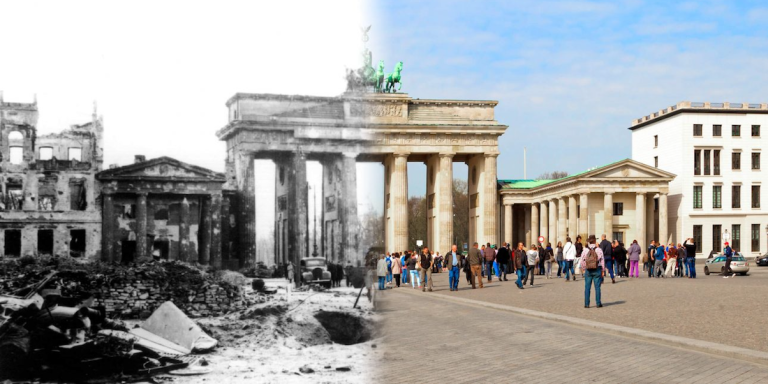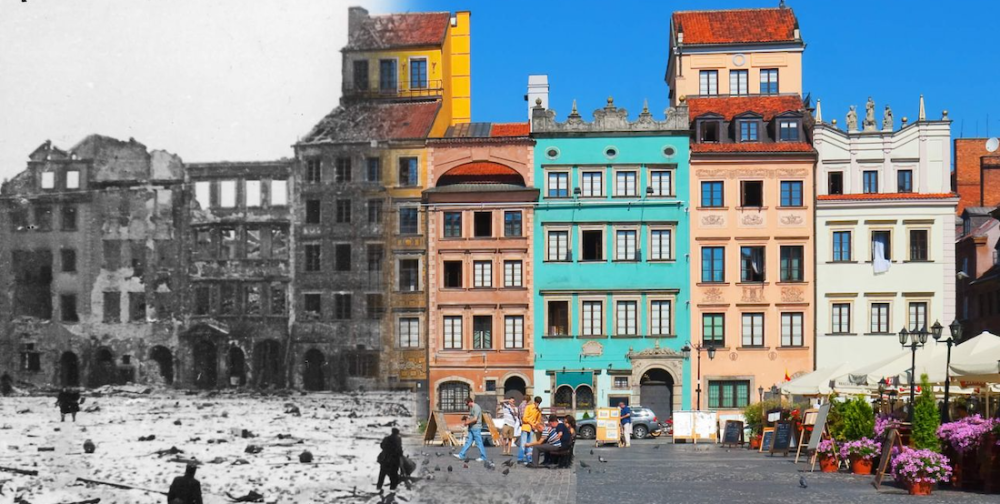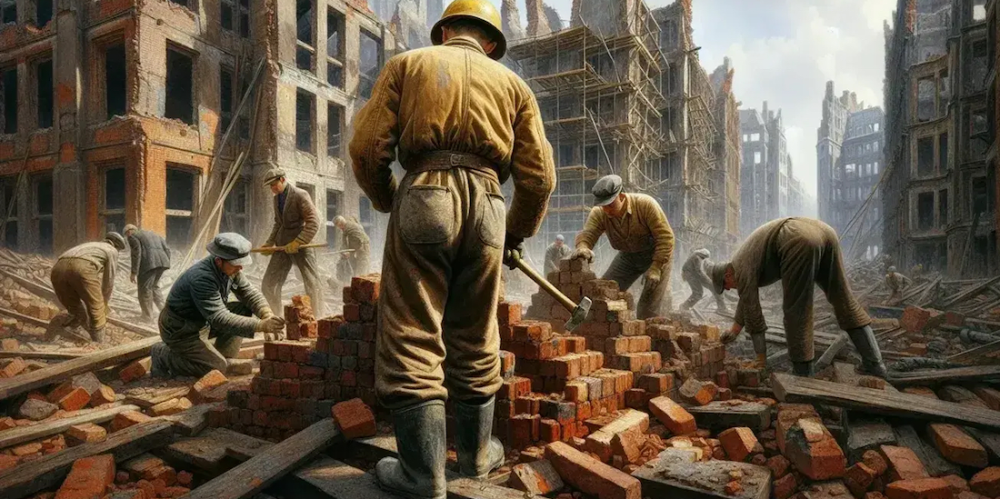
The herculean task of rebuilding a devastated continent while managing deadly reprisals and settling scores
New York, N.Y. – When the guns finally fell silent across Europe in May 1945, the world’s deadliest conflict had ended, but an equally daunting challenge immediately emerged: how to rebuild an entire continent reduced to rubble.
The monumental cleanup operation that followed World War II represented one of history’s most complex undertakings, complicated by widespread destruction, displaced populations, and the settling of scores that gripped survivors across the war-torn landscape.
The scale of destruction defied comprehension. Germany alone had lost approximately 3.6 million housing units, while France saw nearly two million buildings damaged or destroyed. Poland suffered the loss of 38 percent of its national wealth, and the Soviet Union counted 70,000 villages and 1,700 towns completely obliterated. Roads, railways, bridges, and industrial facilities lay in ruins from the Atlantic Ocean to the Ural Mountains, creating a logistical nightmare that would take decades to resolve.

The Human Cost of Victory
Beyond the physical devastation, Europe grappled with an unprecedented humanitarian crisis. An estimated 60 million people found themselves displaced, including Holocaust survivors, former prisoners of war, forced laborers, and millions of ethnic Germans expelled from Eastern European nations. These displaced persons crowded into refugee camps, abandoned buildings, and makeshift shelters, creating additional pressure on already strained resources.
The Allied occupation forces, initially focused on military victory, suddenly found themselves responsible for feeding, housing, and governing populations totaling nearly 200 million people. The United States, Britain, France, and the Soviet Union each controlled different zones, leading to conflicting approaches and competing priorities that often hindered reconstruction efforts.
Infrastructure Reconstruction Challenges
The transportation network posed perhaps the greatest immediate challenge. Germany’s railway system, once the envy of Europe, had been systematically targeted by Allied bombing campaigns. Approximately 40 percent of the rail network lay unusable, while major rivers like the Rhine and Danube remained clogged with sunken vessels and destroyed bridges. The Autobahn system, though partially intact, couldn’t handle the massive movement of people and supplies required for reconstruction.
Food distribution became a critical concern as agricultural regions had been devastated by years of warfare. The Netherlands faced particular hardship during the “Hunger Winter” of 1944-1945, while Germany struggled with widespread malnutrition that persisted well into 1947. Allied forces launched massive relief operations, but bureaucratic inefficiencies and political tensions often delayed essential supplies.
The Dark Side of Liberation
While Europe celebrated liberation from Nazi rule, the aftermath brought its own horrors. Across the continent, vigilante justice and organized reprisals claimed hundreds of thousands of lives. In France, an estimated 10,000 alleged collaborators were executed in extrajudicial killings, while Yugoslavia witnessed systematic massacres of ethnic minorities and political opponents.
The expulsion of ethnic Germans from Poland, Czechoslovakia, and other Eastern European nations created additional trauma. Between 12 and 14 million Germans were forced from their homes, with hundreds of thousands dying during the harsh journeys westward. These population transfers, while sanctioned by the Potsdam Agreement, added another layer of complexity to reconstruction efforts.
Economic Reconstruction and the Marshall Plan
The economic challenges proved equally formidable. Europe’s industrial capacity had been decimated, with Germany losing 80 percent of its steel production capability and France struggling with widespread destruction of its manufacturing base. Currency systems collapsed, black markets flourished, and international trade ground to a halt.
Recognition of these challenges led to the Marshall Plan, announced by U.S. Secretary of State George Marshall in June 1947. This $13 billion initiative (equivalent to approximately $150 billion today) provided crucial financial assistance to Western European nations, helping restore industrial capacity and rebuild infrastructure. The Soviet Union and its satellites rejected participation, deepening the emerging Cold War divide.
Political and Social Reconstruction
The cleanup extended beyond physical reconstruction to include fundamental political and social transformation. Germany underwent denazification programs aimed at removing Nazi influence from society, while war crimes tribunals in Nuremberg and elsewhere sought to establish accountability for wartime atrocities. These efforts, though imperfect, established important precedents for international justice.
Social reconstruction proved particularly challenging in areas where traditional community structures had been destroyed. Poland faced the task of integrating millions of displaced persons into new territories, while France grappled with divisions between resisters and collaborators. Women who had assumed new roles during wartime often found themselves pressured to return to traditional domestic roles, creating additional social tensions.

Legacy of the Cleanup
The European reconstruction effort ultimately succeeded in creating a more prosperous and stable continent, though the process took decades to complete. The experience led to new international institutions, including the United Nations, NATO, and eventually the European Union, designed to prevent future conflicts and coordinate reconstruction efforts.
The cleanup after World War II demonstrated both the resilience of European societies and the importance of international cooperation in addressing humanitarian crises. While the immediate aftermath brought suffering and chaos, the long-term reconstruction laid the foundation for an era of unprecedented peace and prosperity in Western Europe.
The lessons learned from this massive undertaking continue to inform modern post-conflict reconstruction efforts, reminding us that the end of warfare marks not victory’s completion, but rather the beginning of an equally challenging journey toward lasting peace and stability.
Summary
The aftermath of World War II presented Europe with an unprecedented challenge: rebuilding an entire continent while managing displaced populations, settling scores, and establishing new political orders. This monumental cleanup operation, complicated by widespread destruction and ongoing reprisals, ultimately transformed European society and established the foundation for modern international cooperation and institutions.